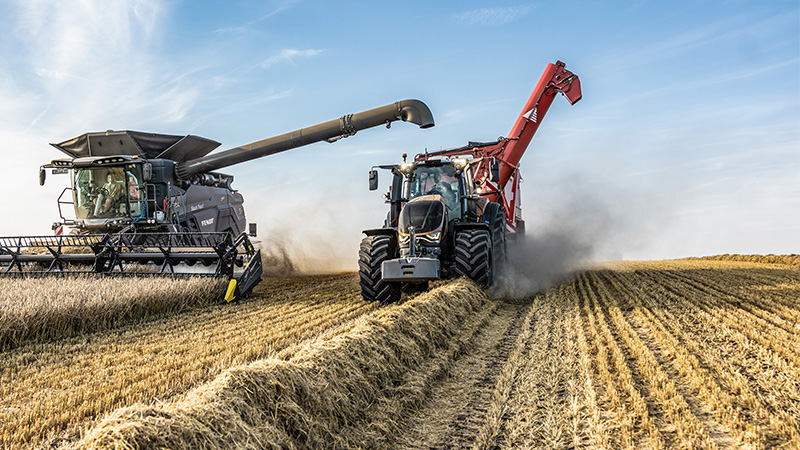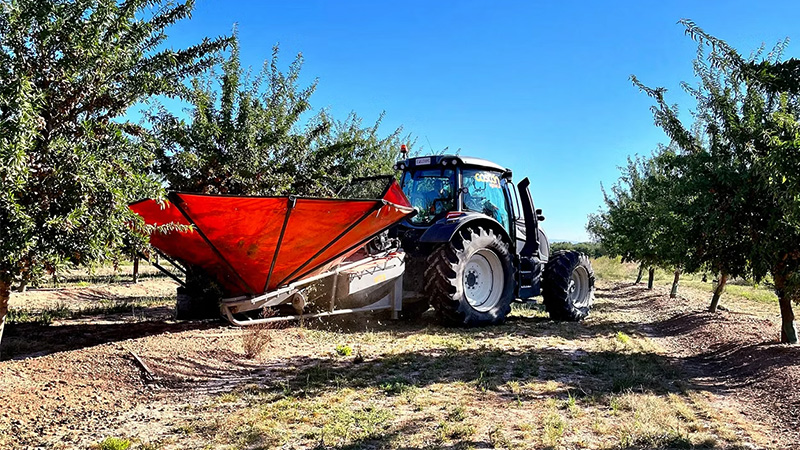Antti Korolainen and Harri Pietiläinen test a tractor in the cold laboratory. The tractor is running on a testbed, while the engineers study the results from behind the glass.
The world is changing, tractors are changing, and the product development of tractors is also changing in step with technology. Simulators are increasingly used to test new tractors and their subassemblies. These simulators do not replace laboratory or field tests, but they have come to support them. Tractors tested in simulators are much readier when they arrive at the laboratory or field.
Valtra’s product development laboratory in Suolahti is reminiscent of Q’s workshop in the James Bond films. Glancing around, you can see the development of tractor technology for the next five years – and further. The Engineering Centre contains a design studio, brake benches, a semi-anechoic quiet room, a cold room, salt spray chambers, vibration benches, large 3D printers and a hydropulsator that could twist a tractor to bits. Of course, this would not be a very smart test; typically, a hydropulsator is used to vibrate a tractor frame or a lifting device over an extended period a few months.
“The role of simulators is growing all the time, and we at Valtra are pretty much at the forefront in this field. Virtual testing allows us to test a new tractor and its components long before building the first prototype. When the same test is then carried out with an actual transmission, engine or cab, for example, we can then use the results also to further develop and refine our simulators,” says Henry Palonen, Director of Engineering.
Virtual testing also offers a lot more repetition than in real-life tests. The testing cycle is much faster than, for example, planning a modification to a certain module, ordering the parts, assembling, running the tests and then further tweaking it according to the test results. With prototypes this can take months or even a year, compared to maybe only weeks or days with a simulator.
The role of simulators is growing all the time. In this picture, a simulator is being used to test the torque rigidity of a cab frame.
Parallel rather than incremental testing
Testing individual modules is also more efficient than testing an entire tractor. The engine, transmission and cab can all be tested at he same time virtually or in laboratories. If they were all attached to a prototype tractor, engine testing would have to wait until the transmission tests have been completed. Nevertheless, the end product, the tractor, still has to be tested carefully.
“The product development process as a whole is not shorter than before, because tractors have become so much more complex, but we are able to do more testing in the same time than before,” Palonen clarifies.
Valtra’s engineering team collaborates closely with parent company AGCO’s other 29 engineering centres. In total, 2500 people work in product development at AGCO, of including 200 in Suolahti. In addition, hundreds of more people work on product development projects related to Valtra, for example at engineering firms and suppliers.
“The Valtra Engineering centre in Suolahti has the resources to design the entire tractor from start to finish. However, every Valtra also uses components that were designed elsewhere, and similarly, other AGCO tractors use components designed by us. What would be the point of designing three slightly different rear linkages, for example, for different tractor brands? Now one team can focus on this while the other two can design something else that is more useful for the customer,” says Palonen.
A new design studio and “four-season” test room will also be built in Suolahti in the near future. The current cold room is capable only of simulating freezing temperatures that are hard to keep steady when a powerful tractor is running. In the new laboratory, the desired temperature will remain constant, and the desired humidity and wind can also be created.
Industrial Designer Henri Hokkanen works on a plastic model of an armrest. A lot of plastic, wood and 3D-printed components are used in the design studio to make full-size mock-up models of future tractors and cabs.
Jan-Erik Karjula operates a tractor on the testbed. The results will be used to further develop both the tractor and the simulator.



